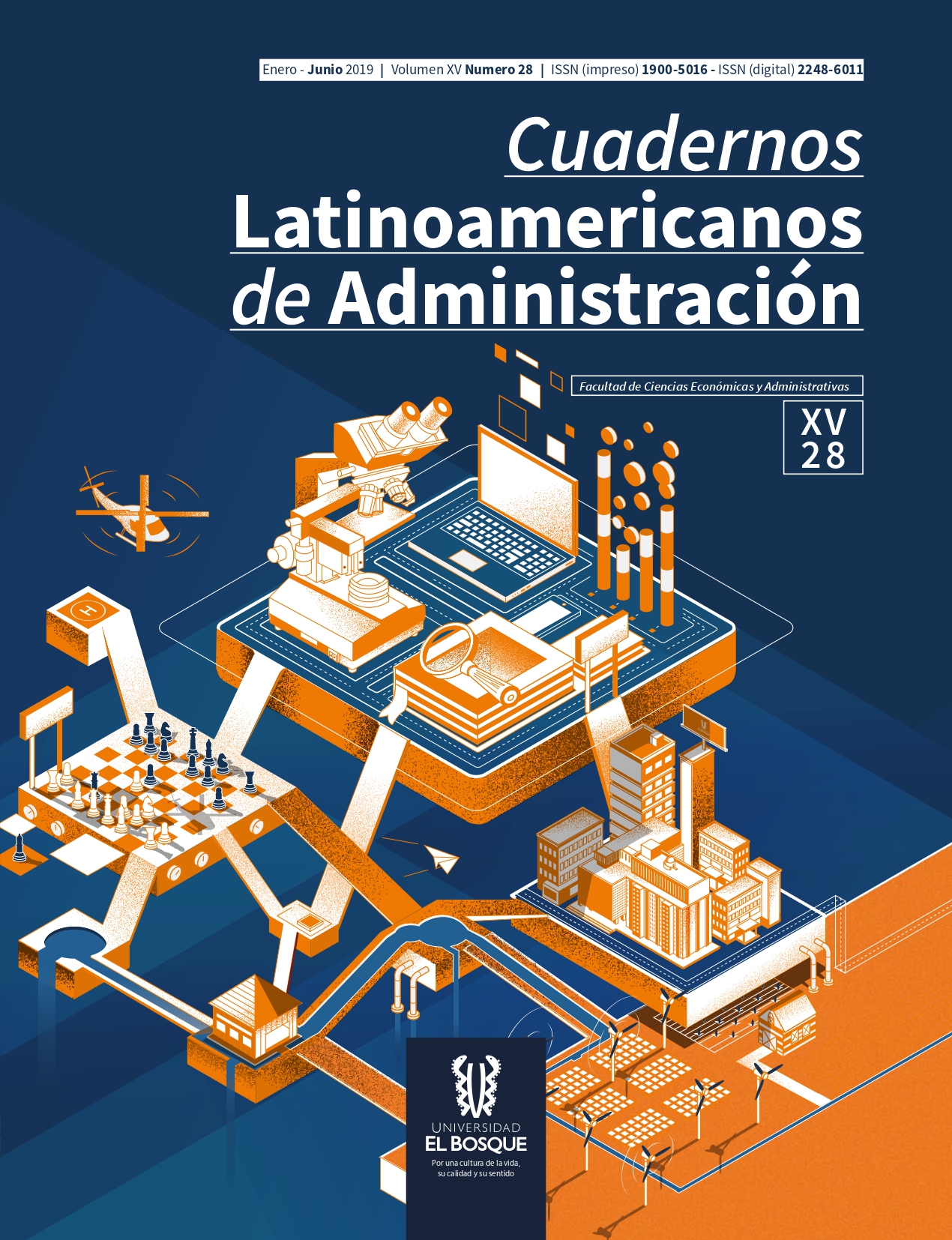Analysis of educational toy packaging design, through neuromarketing.
DOI:
https://doi.org/10.18270/cuaderlam.v15i28.2676Palavras-chave:
Marketing, Neurosciences, Neurodisciplines, NeuromarketingResumo
As a result of the combination of the Neuroscience with marketing, arises neuromarketing, as a research discipline, taking advantage the advances of technology. This new field of knowledge, goes further of traditional tools of quantitative and qualitative research, and focusing in brain reactions of the consumers in front of the marketing stimuli (Reimann, 2011). us, the present investigation, seeks to answer the question of ¿how to improve the efficiency of packaging design in educational toys, through the neuromarkenting? using knowledge and techniques of neuroscience and qualitative research techniques, in order to reach designs appropriate to the needs of brands, advertisers and consumers, and to achieve that, people make better purchasing decisions
Downloads
Referências
Alwitt, L. F., & Mitchell, A. A. (1985). Psychological Processes and Advertising Effects: Theory, Research, and Applications. Hillsdale (N.J.): Erlbaum Associates, Incorporated.
Ariely, D. & Berns, G. (2010). Neuromarketing: the hope and hype of neuroimaging in business. Nature Reviews Neuroscience. 11(4): 284- 292.
Army, W. R. (2017). Walter Reed Army Institute of Research. From http://wrair-www.army.mil
Bisquerra, R. (2015). Universo de emociones: la elaboración de un material didáctico. Zaragoza (España): Congreso internacional de inteligencia emocional y Bienestar.
Braidot, N. P. (2006). Neuromarketing: neuroeconomía y negocios. Madrid (España): Editorial Puerto Norte-Sur.
Cannon, W. (2004). Teoría de Cannon-Bard. Revista Española de Neuropsicología. 6(1-2): 25-52.
Damasio, A. (2017). El arte de mantener el cerebro joven. From https://dornsife.usc.edu/cf/faculty-and-staff/faculty.cfm?pid=1008328
Damásio, A. R. (1994). El error de Descartes. La razón de las emociones. Barcelona (España): Editorial Andrés Bello.
Darwin, C. (1998). La expresión de las emociones en los animales y en hombre. Madrid (España): Alianza Editorial.
Escera, C. E. (2004). Aproximación histórica y conceptual a la Neurociencia Cognitiva. Fundación Dialnet. 16(2): 141-162.
Finger, S. (2001). Origins of Neuroscience: A History of Explorations into Brain Function: Oxford University Press.
Fuster, J. M. (2010). El paradigma reticular de la memoria cortical. Revista de Neurología, 50 (S3-S10).
Garcia, J. R., & Saad, G. (2008). Evolutionary neuromarketing: darwinizing the neuroimaging paradigm for consumer behavior. Journal of Consumer Behaviour. 7(4-5): 397-414.
Gazepoint. (2018). Eye tracking and neuromarketing research made easy. From http://www.gazept.com/
Goldstein, E. B. (1999). Sensación y Percepción. México D.F.: Ediciones Paraninfo S.A.
Howard, P. (2011). Investigación neuroeducativa. Neurociencia, educación y cerebro: De los contextos a la práctica. Madrid (España): Editorial La Muralla.
Juárez, D. (2018). Neuromarketing aplicado al packaging de juguetes educativos. Estudio de caso del juego Aprendo Inglés (EDUCA). Tesis doctoral: Universidad de Alicante, España.
Kandel, E. R. (1982). The origin of modern neuroscience. Annual Review of Neuroscience. 299.
Kahneman, D. (2012). Pensar rápido, pensar despacio. Barcelona (España): Debate.
Kolb, B., & Whishaw, I. Q. (2002). Cerebro y conducta. Una introducción. Madrid (España): McGraw-Hill.
Kotler, P., & Keller, K. L. (2006). Dirección de marketing. México: PEARSON Educación.
LeDoux, J. (1999). El cerebro emocional. Madrid (España): Editorial Planeta.
Lee, N., Broderick, A. J., & Chamberlain, L. (2007). What Is “Neuromarketing”? A Discussion and Agenda for Future Research. International Journal of Psychophysiology. 63: 199-204.
MacLean, P. (1952). Teoría del sistema límbico de Paul MacLean. From http://ymm.yale.edu/autumn2008/features/capsule/51224/
Martínez-Conde, S., Macknik, S. L., y Blakeslee, S. (2012). Los engaños de la mente: cómo los trucos de magia desvelan el funcionamiento del cerebro. Barcelona (España): Ediciones Destino.
Montague, R. (2004). Read Montague. From http://www.csap.cam.ac.uk/network/read-montague/
Morin, C. (2011). Neuromarketing: The New Science of Consumer Behavior. Society, 48(2): 131- 135.
Neuroscience, S. f. (1969). Society for Neuroscience from https://www.sfn.org/
Palmero, F. (1996). Aproximación biológica al estudio de la emoción. Anales de Psicología. 12(1): 61-86.
Papez, J. (1937). Estructuras cerebrales de James Papez. Disponible en: https://es.scribd.com/doc/74152881/CIRCUITO-DE-PAPEZ
Pérez, C. B. (2014). Historia de la neurociencia: El conocimiento del cerebro y la mente desde una perspectiva interdisciplinar. Madrid: Biblioteca Nueva.
Pinel, J. P. J. (2007). Biopsicología. Madrid (España): Pearson.
Ramón y Cajal, S. (2017). El hombre que dibujo los secretos del cerebro. From https://www.nytimes.com/es/2017/02/21/santiago-ramon-y-cajal-el-hombre-que-dibujo-los-secretos-del-cerebro/ Journal of Marketing & International Business - Edition Nº 13, 2017.
Redolar, D. (2014). Neurociencia Cognitiva. Madrid: Editorial Médica Panamericana.
Reimann, M., Schilke, O., Weber, B., Neuhaus, C., & Zaichkowsky, J. (2011). Functional Magnetic Resonance Imaging in Consumer Research: A Review and Application. Psychology & Marketing. 28(6): 608-637.
Tirapu, J. (2010). Neuropsicología, neurociencia y las ciencias PSI. Cuadernos de Neuropsicología. Panamerican Journal of Neuropsychology. 1(5):11-24.
Warton, J. (2014). A Dictionary of Psychology. New Delhi: Goodwill Publishing House.
Downloads
Publicado
Como Citar
Edição
Seção
Licença
Copyright (c) 2019 Universidad El Bosque

Este trabalho está licenciado sob uma licença Creative Commons Attribution-NonCommercial-ShareAlike 4.0 International License.
Los autores cuando envían sus artículos para su evaluación certifican originalidad y transfieren los derechos de propiedad patrimonial a la RevistaCuadernos Latinoamericanos de Administración, de la Universidad El Bosque, para su difusión en forma impresa y/o electrónica. Pero la evidencia científica, la originalidad, el contenido de los documentos son de responsabilidad exclusiva y única de los autores.

| Métricas do artigo | |
|---|---|
| Vistas abstratas | |
| Visualizações da cozinha | |
| Visualizações de PDF | |
| Visualizações em HTML | |
| Outras visualizações | |












